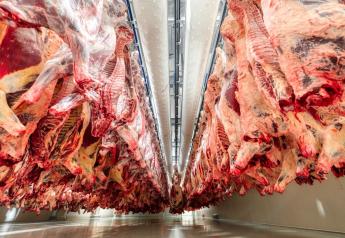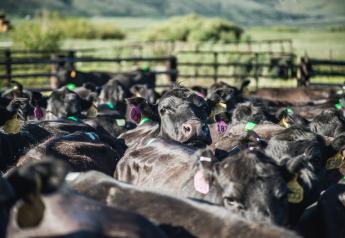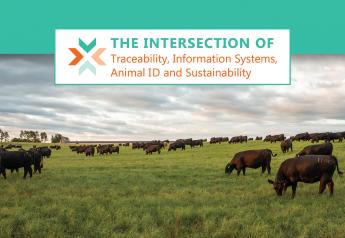Saving Sick Calves

At last year’s American Association of Bovine Practitioners (AAPB) convention, I was asked to present a very short “Practice Tip” on the topic of saving sick calves. While this topic could involve much greater detail based on production systems, disease history, environment and other factors, this outline provides some basic suggestions for accurate diagnosis and timely treatment, which can help resolve many of the common and life-threatening sicknesses we see in calves.
Step 1: Learn to recognize disease as soon as possible.
• If you are able to make an early diagnosis and begin treatment for a specific disease, most calves will recover.
• Once calves are extremely dehydrated, have a severe acidosis or advanced signs of pneumonia, prognosis is often guarded and treatment becomes much more difficult.

Step 2: Use an effective oral electrolyte solution if calves show signs of dehydration. Properties and components of an ideal electrolyte treatment include:
• Sodium – 90 to 130 mM/L
• Potassium – 10 to 30 mM/L
• Contain glycine or acetate to facilitate sodium absorption
• Alkalinizing agent (40-80 mEq/L) – acetate likely better than bicarbonate
• Strong ion difference (SID) of at least 60 mEq/L
• Moderate osmolality (350-450 mOsm/L)

Step 3: Make sure you’re giving enough fluids.
• Remember that a calf already is about 6 to 7% dehydrated when we recognize dehydration clinically.
• Once we recognize clinical signs of dehydration, a couple pints of oral electrolyte solution isn’t enough.
• Likewise, one to two liters of IV/SC fluids is not adequate for treatment at this stage.
• Dehydrated calves need a significant amount of fluids to correct their dehydration, probably four to six liters per day.
Step 4: Use bicarbonate IV when a calf is down.
• Remember most diarrheic calves die from metabolic acidosis.
• Once pH drops below 7.2 and the calf is recumbent, oral electrolyte solutions are unlikely to correct acidemia.
• You can use hypertonic solutions of sodium bicarbonate (NaHCO3), at five to 10 ml/kg over five minutes, when large-volume therapy is not possible.
Step 5: Get calves back on milk as soon as possible.
• There is no benefit to withholding milk for one to two days
• Calves that don’t receive milk become weak and develop severe hypoglycemia.
• Although oral electrolyte solutions provide energy, they are not adequate as a sole energy source.
• Continue to feed milk to calves that will drink.
Step 6: Use bronchoalveolar lavage (BAL) or transtracheal wash (TTW) for diagnostic testing in calves with pneumonia.
• BAL involves passing a through the nose and into the lungs, introducing saline solution which then is collected for examination.
• TTW is performed in an awake or lightly sedated patient by inserting a catheter through the trachea into the lower airways.
• These procedures provide greater sensitivity as compared to nasal swabs.
• Upper respiratory tract (URT) cultures often reveal different bacteria than the populations present in the lungs.
• These procedures are relatively simple and non-invasive. BAL can be performed in about two minutes, generally without sedation or with light sedation.
• For calves less than eight weeks of age, use a 10 French by 36-inch catheter.
• For larger calves, use a 24 French by 59-inch catheter.
• See the sidebar for a more detailed description of the BAL procedure.







